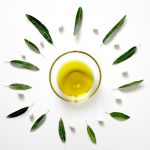Did you know this fact? Butter could be one of the healthiest fats on the planet!
Some people tend to see butter as a big pile of yellow-colored fat harmful for their cardiovascular system, but there is a lot more to it.
I won’t be wrong if I say a butter package is like a small treasure chest. Because there are many important nutrients in there, some of which have potent biological effects! But which butter package?
Let’s deal with these butter facts one by one.
- Butter from grass-fed cows is a major source of heart-supporting nutrients.
Butterfat or milk fat is highly complex. It is found to contain about 400 different fatty acids and a decent amount of fat-soluble vitamins. Although fatty acids are well-known energy boosters, some of them have strong biological activity. They can affect our physiology and biochemistry in some way, offering major health benefits for our hearts. - The fatty acid CLA (short for conjugated linoleic acid) is popular as a fat loss supplement.
Readers, butter from grass-fed cows contains 5 times more CLA than butter from grain-fed cows. And things don’t end here: Butter from grass-fed cows is also much higher in Omega-3 fatty acids and the valuable vitamin K2 when compared with butter from cows on grain diet. - Butter contains saturated fat, but does it really matter?
Butter used to be considered unhealthy exactly because of saturated fat it contains. But now read this: Saturated fat myth has been thoroughly busted in recent years! Studies clearly showed that there is no association between saturated fat contained in butter and heart disease. So, don’t give a damn about it: your “tickly-tickle” will stay healthy if you are hooked on the right butter!
- Studies show that people who eat grass-fed butter have a lower risk of heart disease.
An impressive scientific study on this was published in the American Journal of Clinical Nutrition in the year of 2010. The study looked at CLA levels in fat tissue of 1813 non-fatal heart attack patients and compared them with 1813 similar subjects who hadn’t had heart attacks. The levels of the fatty acid are a reliable marker for the intake of fatty dairy products. The subjects were split into 5 groups, from lowest to highest, depending on levels of CLA.
The relationship between full-fat dairy consumption and heart disease also depends on the country in which the study is performed. In countries where cows are largely grass-fed, the people who eat great amount of butter seem to have a drastically reduced risk of heart disease.
Let’s restate the message the study conveys to the baffled butter consumers:
The more full-fat dairy you consume the lower your risk of heart attack. People who ate most of it were 49 percent less likely to experience a heart attack, compared with those who ate least. So, butter is not as bad as people make it out to be, you just need to find the right type of butter on the supermarket’s shelf.
As you can see, butter from grass-fed cows is a much healthier and more nutritious choice than the other one. This is what really counts fellows for drawing great health benefits for your heart.
I will finish just as I started: Butter could be one of the healthiest fats on the planet provided that cows were fed with the right thing-grass. Loads of grass for the cows means loads of nutrients into your buttered piece of bread!
Source:
Smit LA, et al. Conjugated linoleic acid in adipose tissue and risk of myocardial infarction. American Journal of Clinical Nutrition, 2010.
Additional sources:
http://authoritynutrition.com/
http://beforeitsnews.com/



